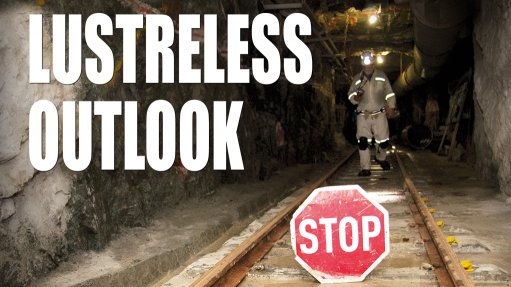
Analysts predict that chronic labour unrest and work stoppages in South Africa’s mining sector, which remain fresh in the minds of investors worldwide, will impact negatively on the country’s precious metals sector this year.
Already dominating the platinum sector, the Association of Mineworkers and Construction Union (AMCU) has made its intentions clear of seeking to also dominate the gold sector. This poses the question of how this will impact on the gold industry this year.
Strategy and communication consultancy africapractice associate consultant Sinethemba Zonke highlights that South Africa’s precious metals sector will continue to be influenced by historical legacies in 2014, including developments in and the realignment of the mining unions in the country. The events that occurred in August 2012 at Lonmin’s Marikana mine were a reflection of the growing tensions within the mining sector, in particular the platinum belt.
“These tensions have been created by the disconnect between mineworkers and their representative unions, as well as widespread poverty in the mining communities, where mineworkers are struggling to support their families living in rural areas,” he adds.
This created an environment that was conducive to the rise of a new union AMCU, which quickly pushed out well-established government-affiliated union the National Union of Mineworkers (NUM), highlights Zonke.
He mentions that the rivalry between AMCU and the NUM has resulted in each of the two unions trying to get the best and most competitive wage deals for its members.
“These developments have added pressure on a mature South African mining sector, where the costs associated with mineral extraction have continued to rise over the years. Production stoppages, as a result of worker downtime, have cost the industry millions in revenue and the demand for double-digit salary increases by labourers – who find themselves deep in financial debt – has only increased the cost of doing business in the country.
“With AMCU and the NUM fighting for domination in the platinum and gold sectors, miners will have to ready themselves for extended difficulties in the industry. Also, this being an election year for South Africa, such problems in the country’s mining industry will become a focal point for debate,” explains Zonke.
Meanwhile, global growth consulting firm Frost & Sullivan consulting manager James Fungai Maposa highlights that agreement between mining companies and the unions will be key for growth in the industry this year.
“It is critical that the labour unrest issues be resolved. Mining companies should counter this by adopting a proactive start in terms of wage negotiations instead of a reactive approach,” he says.
However, Maposa warns that, while there is likely to be growth in the mining sector this year, it will not be as robust as in previous years, during which the industry showed yearly growth of 4% to 5%. “We are likely looking at 2% to 3% growth a year for the next five to ten years,” he surmises.
Weighing in, insurance company Momentum Asset Management equity research analyst Simon Hudson-Peacock notes that investors are looking for an environment where they know the policies that define the sector, enabling them to make logical decisions based on fixed criteria.
“With South Africa’s current account and balance of payment deficits, and weak economic outlook, international ratings agencies downgraded the country’s sovereign debt. In this pernicious environment, the South African precious metals market completed 2013 as the second-worst performing currency behind the Argentine Peso.
“For local mining companies, the labour unrest, poor productivity and price inflation in utilities eroded the profit-margin benefit from the weaker rand. Also, with mine security issues currently being experienced in some mines, black economic-empowerment targets being shifted, and government interference in corporate decision-making, one can begin to under- stand why local mining companies were less attractive in 2013 than their financial and industrial counterparts on the Johannesburg Stock Exchange,” he avers.
Nevertheless, Zonke emphasises how critical the precious metals sector is for South Africa’s economy, as it also plays an important role in the country’s export base.